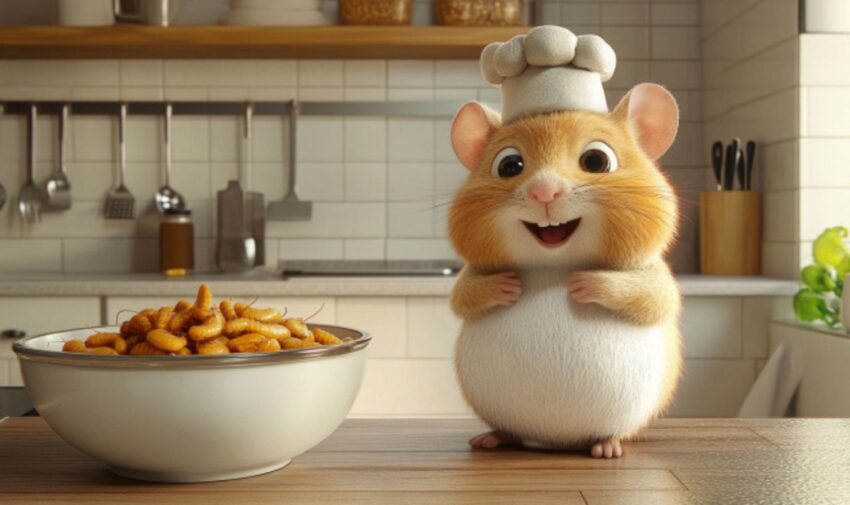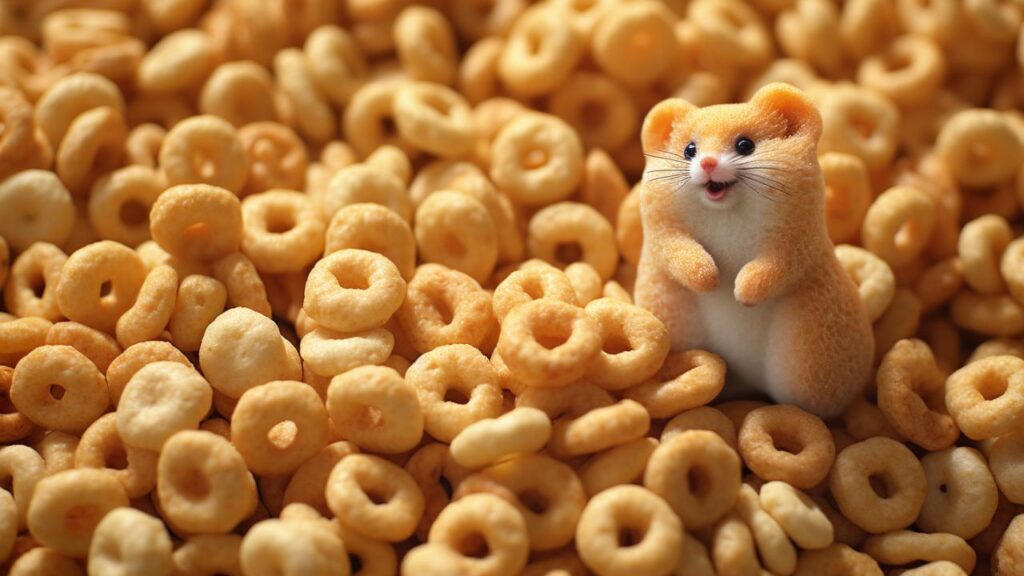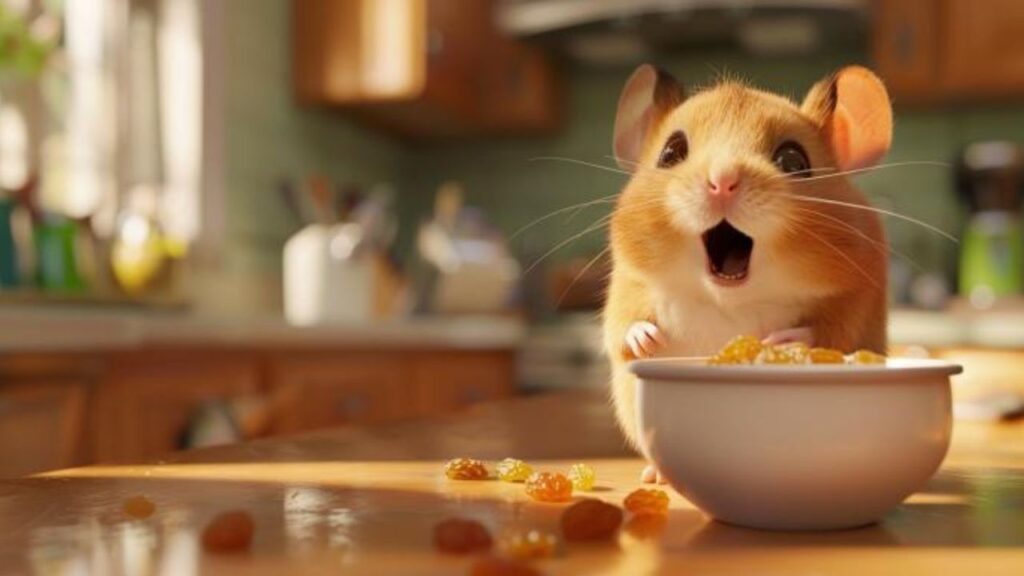TL;DR Summary:
Yes, hamsters can safely enjoy mealworms as an occasional treat! Mealworms are rich in protein, healthy fats, and essential nutrients that support growth, energy, and tissue repair. They also provide mental enrichment by encouraging natural foraging behaviors.
However, moderation is key—mealworms are high in fat and should not replace a hamster’s staple diet. Syrians can have 1–2 mealworms once or twice a week, while smaller dwarf hamsters should only have 1 mealworm weekly. Both live and dried mealworms are suitable, but live ones provide more enrichment, while dried ones are easier to store and handle.
Always source mealworms from reputable suppliers and feed them in small amounts to avoid risks like obesity or digestive issues. Whether live or dried, mealworms are a safe and beneficial snack when served responsibly.
When it comes to feeding hamsters, most owners stick to commercial hamster food and the occasional fresh fruit or vegetable. But did you know that mealworms can also make an exciting and nutritious addition to your hamster’s diet? That’s right—these wriggly little larvae aren’t just for birds or reptiles; they’re perfectly suitable for our tiny rodent friends too!
Mealworms, which are the larvae of darkling beetles, are packed with protein and fats, making them a potential energy-boosting snack for hamsters. However, as with any treat, it’s important to consider both the benefits and the risks before incorporating them into your hamster’s diet. After all, hamsters have specific dietary needs, and overindulgence in high-fat foods like mealworms can do more harm than good.
Can Hamsters Have Mealworms?
To answer this burning question: yes, hamsters can have mealworms—but only when offered in moderation and with the proper precautions. These protein-rich treats can promote health, enhance your hamster’s diet, and even provide mental stimulation by encouraging natural foraging instincts. That said, feeding them improperly could lead to issues like obesity or digestive troubles.
In this article, we’ll break down everything you need to know about feeding mealworms to your hamster. We’ll explore:
- The nutritional profile of mealworms and why they can benefit hamsters.
- The safety considerations to keep in mind, such as portion sizes and potential risks.
- The differences between live and dried mealworms, and which might be best for your furry friend.
- Practical feeding tips and best practices to ensure a safe and enjoyable experience for your hamster.
By the end, you’ll have a clear understanding of whether mealworms are right for your hamster and how to include them in their diet responsibly.
Understanding Mealworms
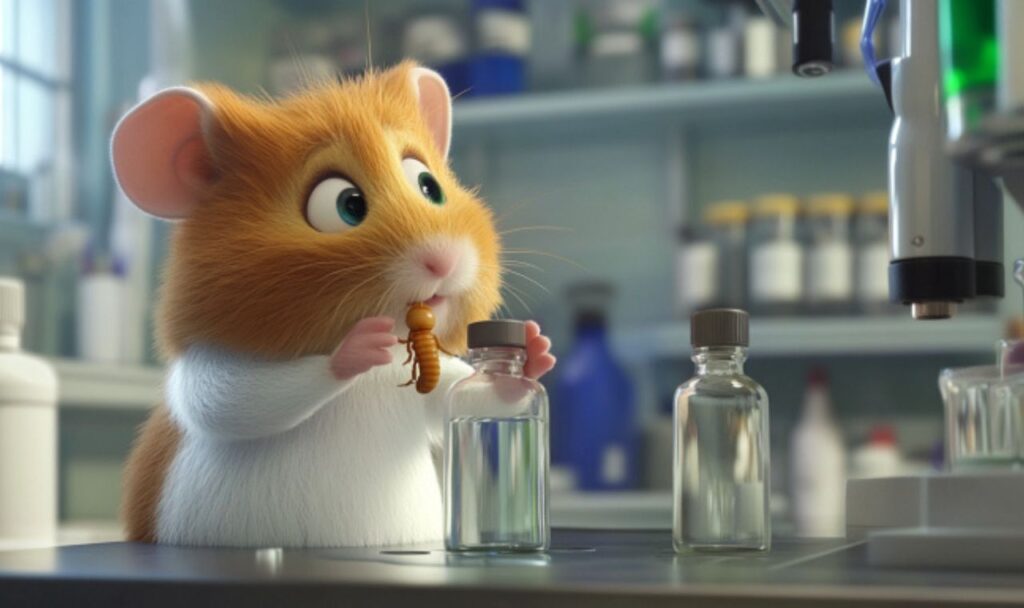
What Are Mealworms?
Mealworms are the larval stage of the darkling beetle (Tenebrio molitor), a species of beetle commonly found in temperate climates. These small, wriggling larvae are often used as food for a variety of animals, including birds, reptiles, fish, and even some mammals. In nature, mealworms play a key role in the food chain, serving as a source of nourishment for insectivores and omnivores due to their high protein and fat content.
While they may not look appealing to us humans, mealworms are a fascinating and versatile food source. They measure about 1–1.5 inches long and are typically golden-yellow or brown in color. They thrive in environments with decaying organic matter, where they help break down plant material. Despite their humble beginnings, mealworms have become a staple in the pet industry due to their impressive nutritional profile and ease of cultivation.
For hamsters, mealworms can mimic some of the foraging opportunities they might encounter in the wild. Wild hamsters are known to be opportunistic eaters, snacking on seeds, grains, and even small insects when available. Offering mealworms can therefore provide a species-appropriate treat that taps into their natural instincts.
Nutritional Profile of Mealworms
Mealworms aren’t just creepy crawlies—they’re nutritional powerhouses! Here’s what makes them so valuable:
- Protein: Mealworms are loaded with protein, typically comprising 50–55% of their dry weight. Protein is essential for muscle development, tissue repair, and overall growth, especially for young or pregnant hamsters. It also provides a good energy source for active hamsters.
- Fat: About 25–30% of mealworms’ dry weight is fat. While fat is necessary for energy and a shiny coat, it can be a double-edged sword if consumed in excess. For hamsters, which are prone to obesity, mealworms should be a carefully rationed treat.
- Fiber: Although mealworms are not rich in fiber, their chitinous (hard) exoskeleton contains some indigestible material that can aid in gut health. However, this is minimal compared to other fibrous food sources.
- Vitamins and Minerals: Mealworms also provide small amounts of essential nutrients, such as:
- Iron: Supports oxygen transport in the blood.
- Potassium: Helps regulate muscle and nerve function.
- B Vitamins: Assist in energy metabolism and nervous system health.
Why Are These Nutrients Important for Hamsters?
Hamsters, as omnivores, require a diet that balances proteins, fats, and carbohydrates to maintain optimal health. While commercial hamster pellets provide the foundation of this balance, treats like mealworms can be an excellent supplement.
- Protein Boost: For young, growing hamsters, or pregnant and nursing females, the extra protein from mealworms is particularly beneficial. It supports their heightened energy and nutritional needs during these life stages.
- Enrichment: In addition to their nutritional benefits, mealworms offer enrichment by stimulating a hamster’s natural foraging and hunting instincts. Watching your hamster nibble on a mealworm can be a fun and rewarding experience for both of you!
Despite their benefits, it’s essential to feed mealworms in moderation. Their high fat content can lead to weight gain if overfed, and it’s always important to balance any treat with a hamster’s overall diet.
Are Mealworms Safe for Hamsters?
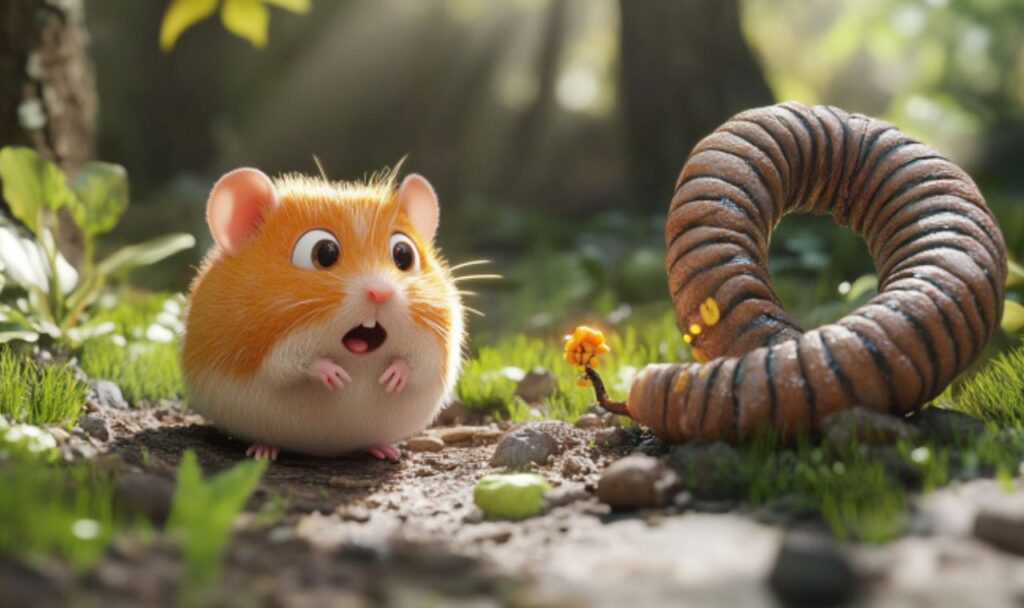
Mealworms are generally safe for hamsters when offered in moderation and prepared properly. While these wriggly treats provide significant nutritional and mental benefits, there are a few risks you should keep in mind to ensure your hamster stays healthy and happy. Let’s explore both the benefits and the potential downsides of incorporating mealworms into your furry friend’s diet.
Benefits of Feeding Mealworms
Mealworms are more than just a snack—they’re a valuable addition to a hamster’s diet when fed appropriately. Here’s how your hamster can benefit from this protein-packed treat:
Protein for Growth, Tissue Repair, and Energy
Protein is one of the most important nutrients in a hamster’s diet, and mealworms are an excellent source of it. As mentioned earlier, mealworms contain approximately 50–55% protein by dry weight. This makes them especially beneficial for:
- Young hamsters: Growing hamsters need ample protein for proper development.
- Pregnant or nursing females: The extra protein supports fetal growth and milk production.
- Active adult hamsters: Protein provides energy for running, climbing, and exploring.
By offering mealworms occasionally, you can give your hamster a quick nutritional boost without overhauling their entire diet.
Enrichment and Mental Stimulation from Hunting Behaviors
Feeding mealworms can do more than nourish your hamster—it can also engage their natural instincts. In the wild, hamsters are opportunistic feeders that occasionally snack on insects. By giving your hamster a live or dried mealworm, you’re mimicking this natural foraging behavior, which adds excitement and enrichment to their day.
- Live Mealworms: Watching your hamster “hunt” a live mealworm is not only entertaining for you but also highly stimulating for them. It encourages exercise and taps into their innate curiosity.
- Dried Mealworms: While they don’t move around, dried mealworms can still be hidden in bedding or toys to create a fun foraging challenge.
Mental stimulation is a key component of hamster care, as it prevents boredom and reduces stress, ultimately contributing to a happier, healthier pet.
Potential Risks to Consider
While mealworms offer many benefits, they also come with a few risks. Understanding and mitigating these risks is crucial to safely incorporating them into your hamster’s diet.
Overfeeding Risks: Obesity and Digestive Issues
Mealworms are high in fat, with fat making up about 25–30% of their dry weight. While this fat content is a great source of energy in small amounts, overfeeding can lead to:
- Obesity: Hamsters are prone to weight gain, especially Syrian hamsters, which can develop health issues if they become overweight.
- Digestive Upsets: A sudden influx of high-fat foods can upset your hamster’s delicate digestive system, leading to loose stools or discomfort.
To avoid these issues, mealworms should be offered as a treat rather than a staple food. For example:
- Syrian hamsters can have 1–2 mealworms a couple of times a week.
- Dwarf hamsters, which are smaller, should have no more than 1 mealworm per week.
Choking Hazards or Improper Digestion
Hamsters have small mouths and digestive systems, so feeding mealworms that are too large or improperly prepared can pose a problem.
- Live Mealworms: These can sometimes wiggle excessively, making them harder for a hamster to chew. Ensure that the mealworms are of appropriate size (not larger than your hamster’s head) or consider pre-cutting them if necessary.
- Dried Mealworms: While easier to store, dried mealworms can be tough and crunchy, potentially leading to choking if not chewed properly. Always observe your hamster when introducing mealworms to ensure they’re chewing safely.
Hygiene Concerns with Live vs. Dried Mealworms
When choosing between live and dried mealworms, hygiene should be a key consideration:
- Live Mealworms: These can harbor bacteria if not sourced from a reputable supplier. They also need to be kept in clean, controlled conditions to avoid contamination.
- Dried Mealworms: While more hygienic than live ones, dried mealworms can lose some of their nutritional value during the drying process. Check the packaging for expiration dates and ensure they’re free of added preservatives or harmful chemicals.
In both cases, it’s vital to handle mealworms properly. Wash your hands after handling live mealworms to prevent the spread of germs, and store dried mealworms in a cool, dry place to prevent spoilage.
Live vs. Dried Mealworms: Which Is Better?
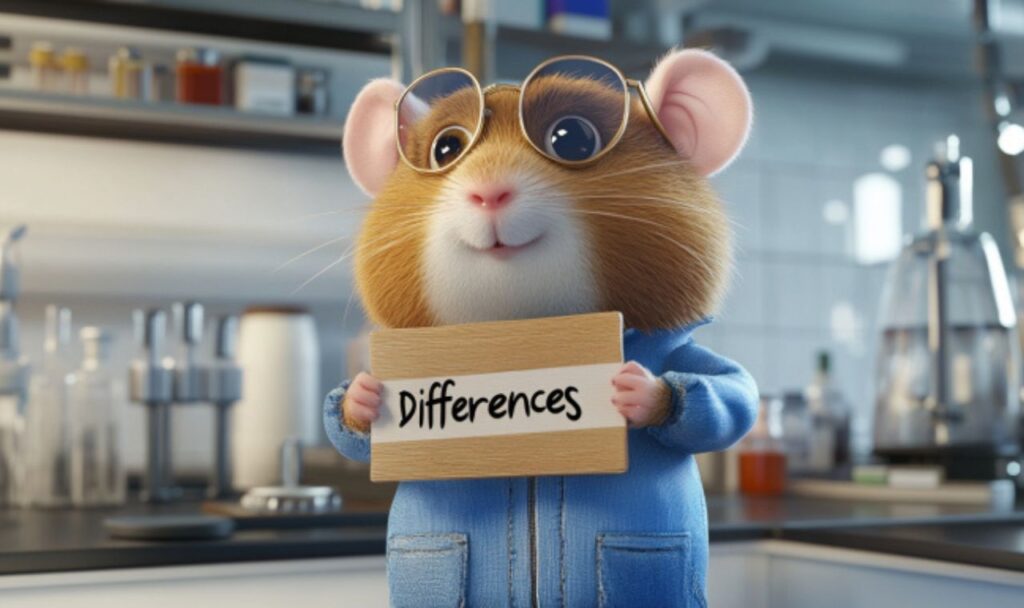
When deciding whether to feed your hamster live or dried mealworms, it’s important to consider factors like nutritional value, convenience, and safety. Both options have their pros and cons, and the choice ultimately depends on your hamster’s needs—and your personal comfort level. Let’s take a closer look at each type to help you make an informed decision.
Live Mealworms
Live mealworms are the most natural option, closely mimicking what wild hamsters might encounter in their environment. They wiggle, crawl, and encourage your hamster to “hunt,” providing an engaging feeding experience.
Benefits of Live Mealworms
- High Nutritional Content:
Live mealworms retain all their natural nutrients, including their full protein and fat content. This makes them a highly nutritious option for your hamster. - Mental Stimulation:
Watching a live mealworm move triggers your hamster’s natural foraging and hunting instincts. This provides both exercise and mental enrichment, which are vital for a happy hamster. - Hydration Boost:
Since live mealworms contain more moisture than dried ones, they can offer a small hydration boost, especially useful for hamsters that might not drink as much water as they should.
Drawbacks of Live Mealworms
- Storage and Maintenance:
Live mealworms require proper care to stay healthy. They must be kept in a container with adequate ventilation, provided with a bedding substrate (like oats), and occasionally fed small amounts of fresh vegetables for hydration. - Hygiene Concerns:
If not purchased from a reliable source, live mealworms may carry bacteria or parasites, posing a risk to your hamster. Handling them requires good hygiene practices, including washing your hands before and after. - Owner Squeamishness:
Let’s face it—some people aren’t thrilled about handling wriggling, squirmy bugs! If the idea of feeding live mealworms makes you uneasy, this might not be the best option for you.
Dried Mealworms
Dried mealworms are a more convenient and less messy alternative to live ones. They are widely available, easy to store, and simple to handle, making them a popular choice for hamster owners.
Benefits of Dried Mealworms
- Convenience:
Dried mealworms are shelf-stable and require no special storage or care. Simply keep them in an airtight container in a cool, dry place, and they’re ready whenever your hamster wants a treat. - Cleanliness:
Unlike live mealworms, dried ones don’t crawl or leave behind residue, making them a more hygienic choice. They’re ideal for hamster owners who prefer a no-fuss feeding experience. - Long Shelf Life:
Dried mealworms last much longer than live ones, making them cost-effective. A single package can provide treats for your hamster for weeks or even months.
Drawbacks of Dried Mealworms
- Reduced Nutritional Value:
The drying process can strip mealworms of some of their natural nutrients, particularly their moisture content and certain heat-sensitive vitamins. While still a good source of protein and fat, they’re slightly less nutritious than their live counterparts. - Hard Texture:
Dried mealworms can be crunchy, which some hamsters love—but for others, especially smaller breeds like dwarf hamsters, this tough texture might be harder to chew. - Risk of Additives:
Some commercial dried mealworms are treated with preservatives or additives. It’s crucial to check the packaging and choose a brand that offers 100% natural, untreated mealworms.
How to Source Safe, High-Quality Mealworms
Whether you choose live or dried mealworms, sourcing them from a reputable supplier is essential to ensure the health and safety of your hamster. Here are some tips to help you find the best mealworms:
- Buy From Trusted Pet Stores or Suppliers:
Avoid picking up mealworms from bait shops or garden centers, as these may be treated with chemicals or not intended for animal consumption. Stick to pet stores or online retailers that specialize in hamster-safe foods. - Look for Organic Options:
If possible, choose mealworms raised organically, without exposure to pesticides or harmful chemicals. This is especially important for live mealworms, which should be kept in clean, food-grade conditions. - Inspect the Packaging:
For dried mealworms, check the label for unnecessary additives like artificial flavors, preservatives, or coloring. The ingredient list should contain only one item: mealworms. - Store Properly:
- Live Mealworms: Keep them in a ventilated container with bedding material (like oats) in the refrigerator to slow their growth. Feed them small amounts of vegetables to keep them fresh.
- Dried Mealworms: Store in a cool, dry place in an airtight container to maintain freshness.
- Start Small:
When introducing mealworms to your hamster for the first time, offer just one and monitor how they respond. This will help you determine if they like it and if it agrees with their digestion.
Which Should You Choose?
The decision between live and dried mealworms depends on your priorities:
- Choose live mealworms if you want maximum nutritional value and mental enrichment for your hamster and are comfortable handling live insects.
- Opt for dried mealworms if you value convenience, long shelf life, and a mess-free feeding experience.
No matter which you select, the key is moderation. Mealworms should be offered as an occasional treat alongside a balanced hamster diet. Up next, we’ll cover practical tips on how to feed mealworms to your hamster safely and effectively!
How to Feed Mealworms to Your Hamster

Mealworms can be a delightful treat for your hamster, but it’s important to serve them in the right amounts and use safe feeding techniques. This ensures that your furry friend enjoys the benefits of mealworms without any digestive issues or risks from overfeeding. In this section, we’ll break down portion sizes, feeding frequency, and creative ways to offer mealworms to keep your hamster happy and healthy.
Portion Sizes and Frequency
Hamsters come in different species and sizes, so their dietary needs vary. While mealworms are packed with nutrients, they are also high in fat and should only be offered in moderation. Let’s explore how much is appropriate for each type of hamster and how often you can safely include mealworms in their diet.
Syrian Hamsters
Syrian hamsters are the largest of the pet hamster species, so they can handle slightly larger portions of mealworms compared to their smaller cousins.
- Portion Size: Offer 1–2 mealworms per serving.
- Frequency: Feed mealworms once or twice a week as an occasional treat.
Dwarf Hamsters (e.g., Roborovski, Winter White, Campbell’s)
Dwarf hamsters are much smaller than Syrians, so they require smaller quantities of treats like mealworms. Their tiny bodies are more sensitive to high-fat foods.
- Portion Size: Offer half a mealworm to 1 mealworm per serving. You can cut dried mealworms into smaller pieces or choose smaller live mealworms.
- Frequency: Feed mealworms only once a week to avoid overloading their diet with fat.
Young, Pregnant, or Nursing Hamsters
These hamsters have higher protein requirements to support growth, reproduction, and milk production.
- Portion Size: Follow the size recommendations above but slightly increase frequency to meet their nutritional needs.
- Frequency: Young, pregnant, or nursing hamsters can have mealworms 2–3 times a week, but monitor their weight to ensure they aren’t gaining excess fat.
Feeding Techniques
Once you know how much to feed, the next step is deciding how to serve mealworms. Introducing them properly and offering them in creative ways can make feeding time both nutritious and engaging for your hamster.
Best Practices for Introducing Mealworms
- Start Slowly:
If your hamster has never tried mealworms before, introduce them cautiously. Offer a small piece to see if your hamster enjoys it and tolerates it well. Some hamsters might hesitate to eat mealworms at first, especially if they’re not used to animal-based foods. - Watch for Allergies or Digestive Issues:
After introducing mealworms, monitor your hamster for any signs of digestive upset, such as diarrhea or bloating. If you notice any issues, discontinue feeding mealworms and consult your vet. - Use Fresh, High-Quality Mealworms:
Always ensure that the mealworms (live or dried) are safe, free of additives, and sourced from reputable suppliers. Avoid mealworms that smell bad, look discolored, or are past their expiration date.
Ideas for Serving Mealworms
Hamsters love variety, and there are plenty of ways to make mealworm feeding fun and engaging. Here are a few ideas to keep your furry friend entertained:
- Hand-Feeding:
If your hamster is comfortable with you, try offering a mealworm directly from your hand. This is a great way to build trust and strengthen your bond with your pet. - As a Treat:
Simply place a mealworm in your hamster’s food dish or favorite treat spot. This straightforward approach ensures your hamster gets the snack without too much effort. - Foraging Fun:
Hamsters are natural foragers, so hiding mealworms in their bedding, toys, or tunnels can encourage them to search for their treat. This activity provides mental stimulation and satisfies their instincts. Tip: Place a dried mealworm inside a cardboard tube or a small, hamster-safe box filled with shredded paper for an added challenge. - As Part of a Mixed Treat:
Combine mealworms with other healthy treats, such as sunflower seeds or oats, to create a custom snack mix. This helps balance the high-fat content of mealworms with lower-calorie options. - Training Rewards:
Use mealworms as an incentive during playtime or training. If you’re teaching your hamster to climb onto your hand or perform simple tricks, a mealworm can be a motivating reward. - In a Foraging Toy or Puzzle Feeder:
Stuff a foraging toy with dried mealworms and let your hamster work to retrieve them. Puzzle feeders designed for small animals can also be a great way to serve mealworms while encouraging problem-solving skills.
Whisker Tips: Practical Advice for Feeding Mealworms

If you’re ready to introduce mealworms into your hamster’s diet but still have a few lingering concerns or questions, don’t worry! This section is packed with practical advice to make the process smooth, safe, and enjoyable for both you and your furry companion. Whether you’re dealing with squeamishness, unsure how to handle live mealworms, or wondering about storage solutions, I’ve got you covered. Let’s dive in with some actionable “whisker-worthy” tips!
Buying Mealworms
- Choose a Reputable Source:
- Always purchase mealworms from pet stores, reputable online suppliers, or trusted local breeders. Avoid buying mealworms from bait shops or garden centers, as these may not meet the safety standards for animal consumption.
- If possible, opt for mealworms labeled as organic or raised without pesticides for added peace of mind.
- Inspect the Quality:
- For live mealworms: Look for worms that are active, firm, and light golden-brown in color. Avoid sluggish, discolored, or smelly worms.
- For dried mealworms: Check for crispness and avoid any that appear damp, moldy, or have an off-putting smell. Ensure the ingredient list says “100% mealworms” with no added chemicals or preservatives.
Preparing Mealworms
- Live Mealworms:
- If you’re squeamish, try using feeding tongs or tweezers to pick up the mealworms instead of handling them with your hands. This keeps your experience less icky and maintains cleanliness.
- Gut-load live mealworms before feeding them to your hamster. This means feeding the mealworms small amounts of fresh vegetables (like carrot slices or cucumber) for 24 hours prior to offering them to your pet. This process boosts their nutritional value for your hamster.
- Dried Mealworms:
- Rehydrate dried mealworms if your hamster prefers a softer texture. Soak them in a small amount of warm water for 5–10 minutes before serving. Always drain excess water before giving them to your hamster.
- Break dried mealworms into smaller pieces for dwarf hamsters to make them easier to chew and digest.
Storing Mealworms
- Live Mealworms:
- Store live mealworms in a container with breathable holes and a substrate like oatmeal or wheat bran. Keep the container in the refrigerator (but not the freezer!), as the cold will slow their metabolism and extend their lifespan.
- Feed the mealworms a small amount of fresh vegetable or fruit once a week to keep them healthy, but don’t leave the food in for too long as it can rot and attract bacteria.
- Dried Mealworms:
- Dried mealworms are far easier to store. Keep them in an airtight container in a cool, dry place, away from moisture and direct sunlight. This will help maintain their crunch and freshness.
Addressing Common Concerns
- “I’m Squeamish About Handling Mealworms!”
- Squeamishness is common, especially with live mealworms. If the thought of handling them makes your skin crawl, start with dried mealworms—they’re crunchy, odor-free, and much easier to manage.
- For live mealworms, use feeding tools like tweezers, or wear gloves while handling them. As you gain confidence, you might find they’re not so bad after all!
- “My Hamster Seems Unsure About Mealworms.”
- Some hamsters might be hesitant when introduced to mealworms for the first time, especially if they’ve never had insects before. Start small by offering half a mealworm and let them sniff it. If they don’t eat it right away, try again later.
- You can also mix a small piece of mealworm with other favorite treats (like seeds) to encourage them to try it. Hamsters are naturally curious, so most will eventually warm up to this tasty snack.
- “Are Mealworms Really Safe for My Hamster?”
- Yes, mealworms are safe as long as they are fed in moderation and come from a trusted source. Stick to the portion guidelines outlined earlier and keep mealworms as an occasional treat rather than a dietary staple. If your hamster is a picky eater or has specific health conditions, consult your vet before introducing new foods.
Bonus Whisker Tip: Make It Fun!
Get creative with how you serve mealworms to your hamster. Try hiding them in toys, sprinkling them into their bedding for foraging fun, or using them as training rewards. The more interactive and engaging the feeding experience, the more your hamster will enjoy it—and you’ll have a blast watching their excitement!
Conclusion
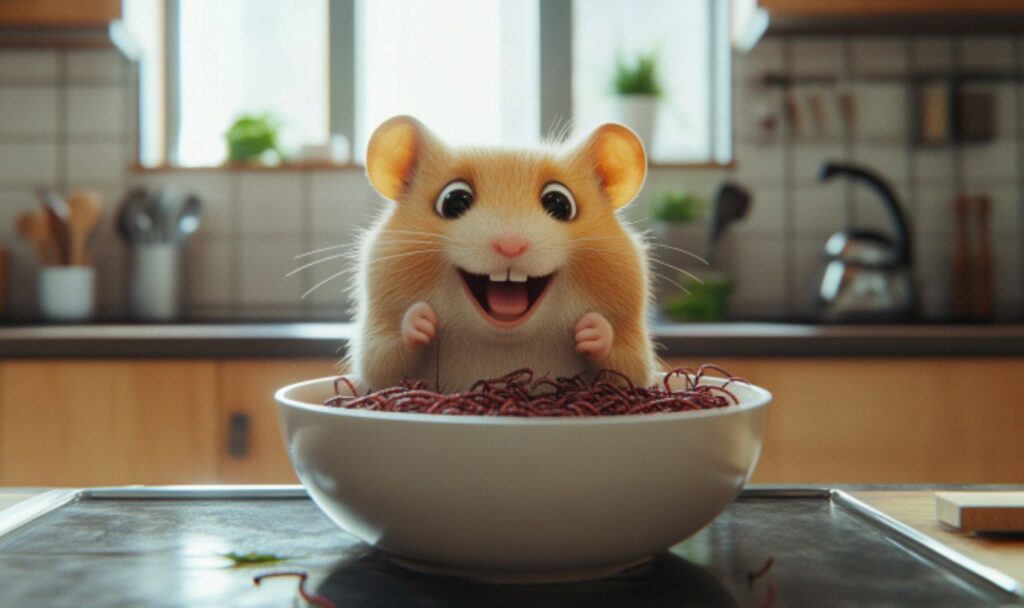
Mealworms can be a delightful, nutritious addition to your hamster’s diet when offered responsibly. As we’ve explored throughout this guide, these wriggly treats are packed with protein, healthy fats, and essential nutrients that can benefit your hamster’s growth, energy levels, and overall health. They also provide excellent mental enrichment by stimulating natural foraging and hunting behaviors.
That said, moderation and proper preparation are key. Mealworms, while nutritious, are also high in fat and should only be given as an occasional treat to avoid risks like obesity or digestive issues. Ensuring you feed the right portion size—whether for a large Syrian hamster or a tiny dwarf hamster—is critical to keeping your pet happy and healthy.
When sourcing mealworms, always choose high-quality, hamster-safe options, and decide whether live or dried mealworms best suit your hamster’s needs (and your own comfort level!). Remember to monitor your hamster for any signs of digestive upset when introducing new foods and always handle mealworms, especially live ones, with proper hygiene.
So, can hamsters have mealworms? Absolutely! When served in moderation and prepared with care, mealworms are a safe, beneficial, and fun treat for hamsters of all species. Just be sure to balance them with a variety of other healthy foods to maintain a complete and well-rounded diet.
By following these guidelines, you’ll not only enhance your hamster’s diet but also their quality of life through enrichment and variety. Your furry friend will thank you with their adorable squeaks and energetic wheel-spinning!
Remember, a happy hamster is a wheel-y happy you!

